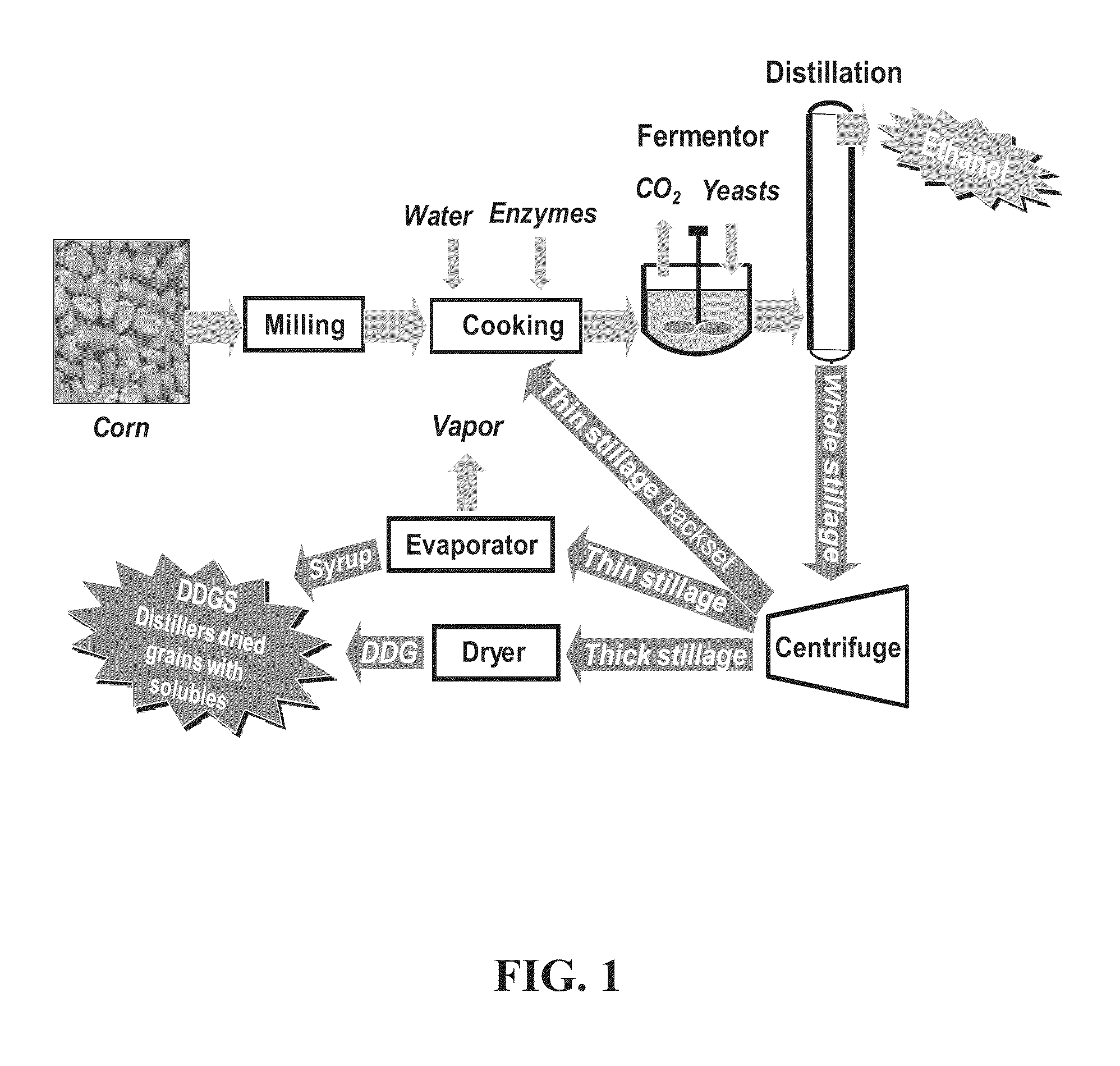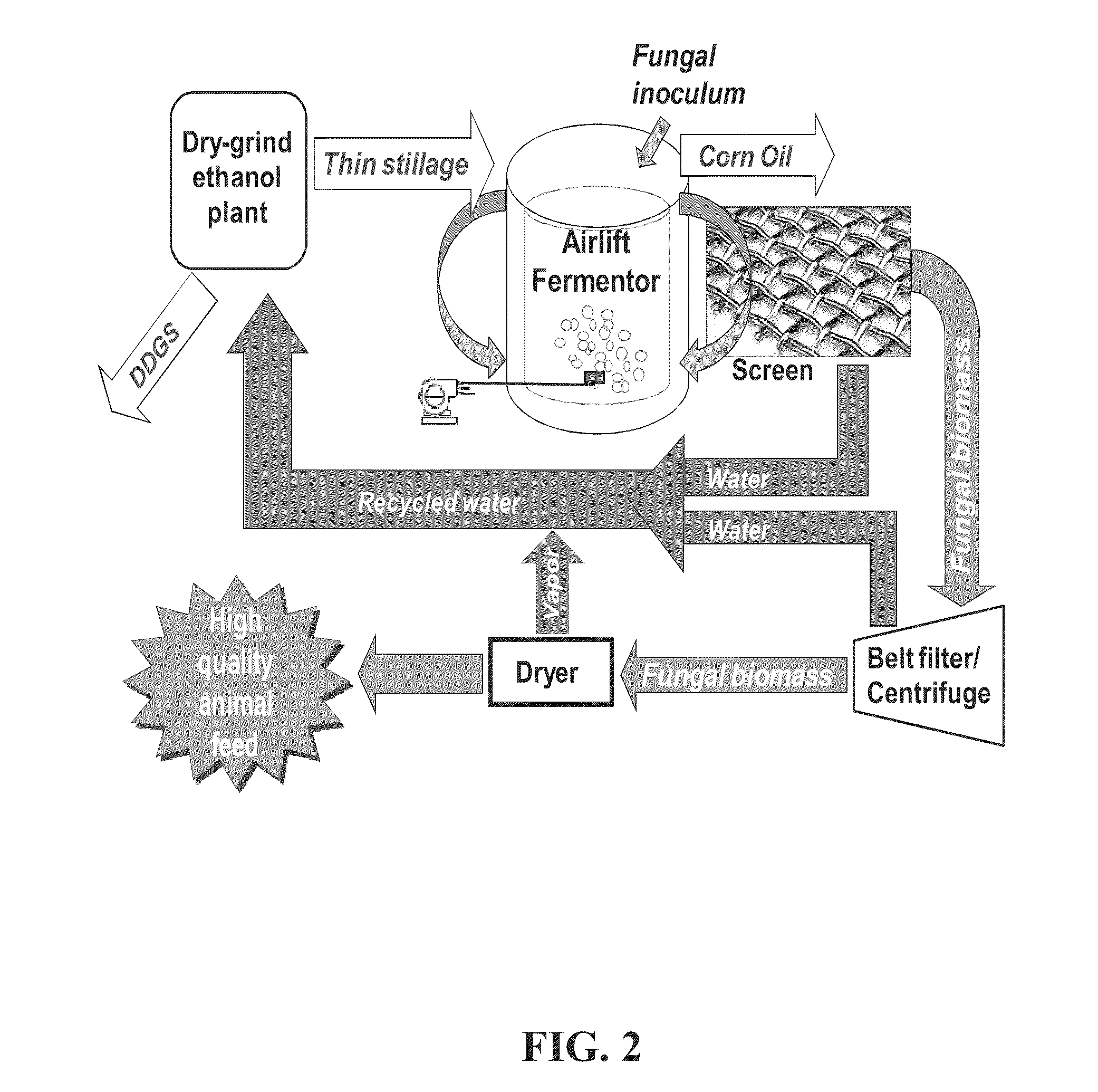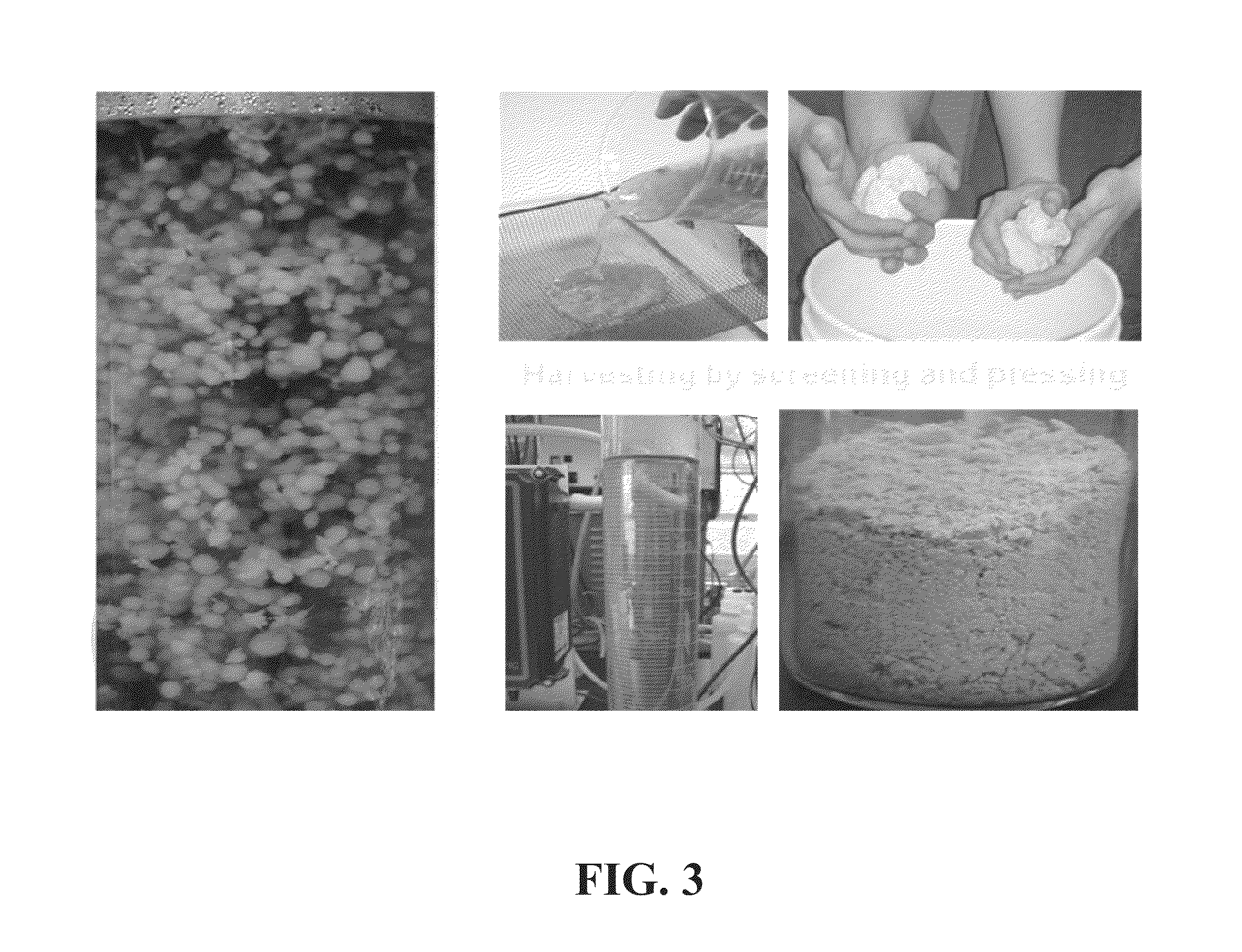Fungi cultivation on alcohol fermentation stillage for useful products and energy savings
a technology of fungi cultivation and stillage, which is applied in the direction of microorganisms, biological water/sewage treatment, water/sewage treatment by oxidation, etc. it can solve the problems of limiting the use of ddgs in animal feed, a major burden on ethanol plants, and a large amount of ddgs. , to achieve the effect of enhancing the morphology of fungi, reducing stillage processing costs, and facilitating dewater
- Summary
- Abstract
- Description
- Claims
- Application Information
AI Technical Summary
Benefits of technology
Problems solved by technology
Method used
Image
Examples
example 1
Water Reclamation and Fungal Biomass from Corn Ethanol Stillage
1. Introduction
[0073]Dry-grind corn ethanol plants, the backbone of a rapidly expanding biofuel industry, generate copious amounts of stillage, the leftovers from fermentation followed by distillation. Most conventional dry-grind corn ethanol plants use on average 3.5 gal of fresh water [1] and generate 5-6 gal stillage per gal ethanol after distillation, of which up to half is recycled directly as backset [2]. The ethanol-to-stillage ratio in the beer from a finished fermentation is limited by ethanol toxicity to the yeast. Most thin stillage is currently concentrated by flash evaporation—an energy-intensive process—blended with distillers grains, and dried to produce distillers dried grains with solubles (DDGS). Thin stillage is generated in pasteurized condition and is rich in nutrients, with a chemical oxygen demand (COD) up to 100 g / L. The initial pH of 4 and high organic content make it an ideal feedstock for funga...
example 2
Fungal Treatment of Thin Stillage in Airlift Reactors
[0127]Airlift reactors represent an efficient way of introducing oxygen at high rates. Extremely high rates of oxygen transfer may be required for the aerobic fungal process along with the particularly high oxygen demand of thin stillage from corn-to-ethanol plants. Three different airlift reactors were constructed on different scales to develop design guidelines for effective aeration.
[0128]2.1 Airlift Reactor of 6 L
[0129]An airlift reactor was constructed by fitting a 100 mm draft tube inside a 150 mm reactor, vertically and concentric with the main reactor. This draft tube was shorter than the main reactor and mounted such that the reactor contents could freely flow between the inner part of the draft tube and the annulus between the draft tube and the reactor. This stillage with a fungal inoculum was added to the reactor similar to what was done in Example 1. The reactor was aerated only in the center portion, causing the cont...
example 3
Development of Oil Recovery Technology
[0150]The oil production process involves the oleaginous mold, Mucor circinelloides, which is able to produce and accumulate triglycerides to constitute over 60% of its cell mass when grown on simple carbon sources. These carbon sources could be left-over carbohydrate wastes from other plant processing activities and that is a viable option to extend biofuel production at existing facilities where crops are processed. The oil is in the form of triglycerides. Ultrasonication, in the presence of methanol or ethanol and a recyclable catalyst transesterifies the oil to mycofuel, akin to biodiesel. A new catalyst makes this possible in seconds and at low pressure and energy expenditure. This contrasts industrial techniques that require nearly an hour of reaction time at elevated temperatures (˜60 C). Glycerol byproduct from the mycofuel formation can be recycled and used as additional substrate in the Mucor circinelloides reactor to make more fungal ...
PUM
| Property | Measurement | Unit |
|---|---|---|
| COD | aaaaa | aaaaa |
| length | aaaaa | aaaaa |
| temperature | aaaaa | aaaaa |
Abstract
Description
Claims
Application Information
 Login to View More
Login to View More - R&D
- Intellectual Property
- Life Sciences
- Materials
- Tech Scout
- Unparalleled Data Quality
- Higher Quality Content
- 60% Fewer Hallucinations
Browse by: Latest US Patents, China's latest patents, Technical Efficacy Thesaurus, Application Domain, Technology Topic, Popular Technical Reports.
© 2025 PatSnap. All rights reserved.Legal|Privacy policy|Modern Slavery Act Transparency Statement|Sitemap|About US| Contact US: help@patsnap.com



